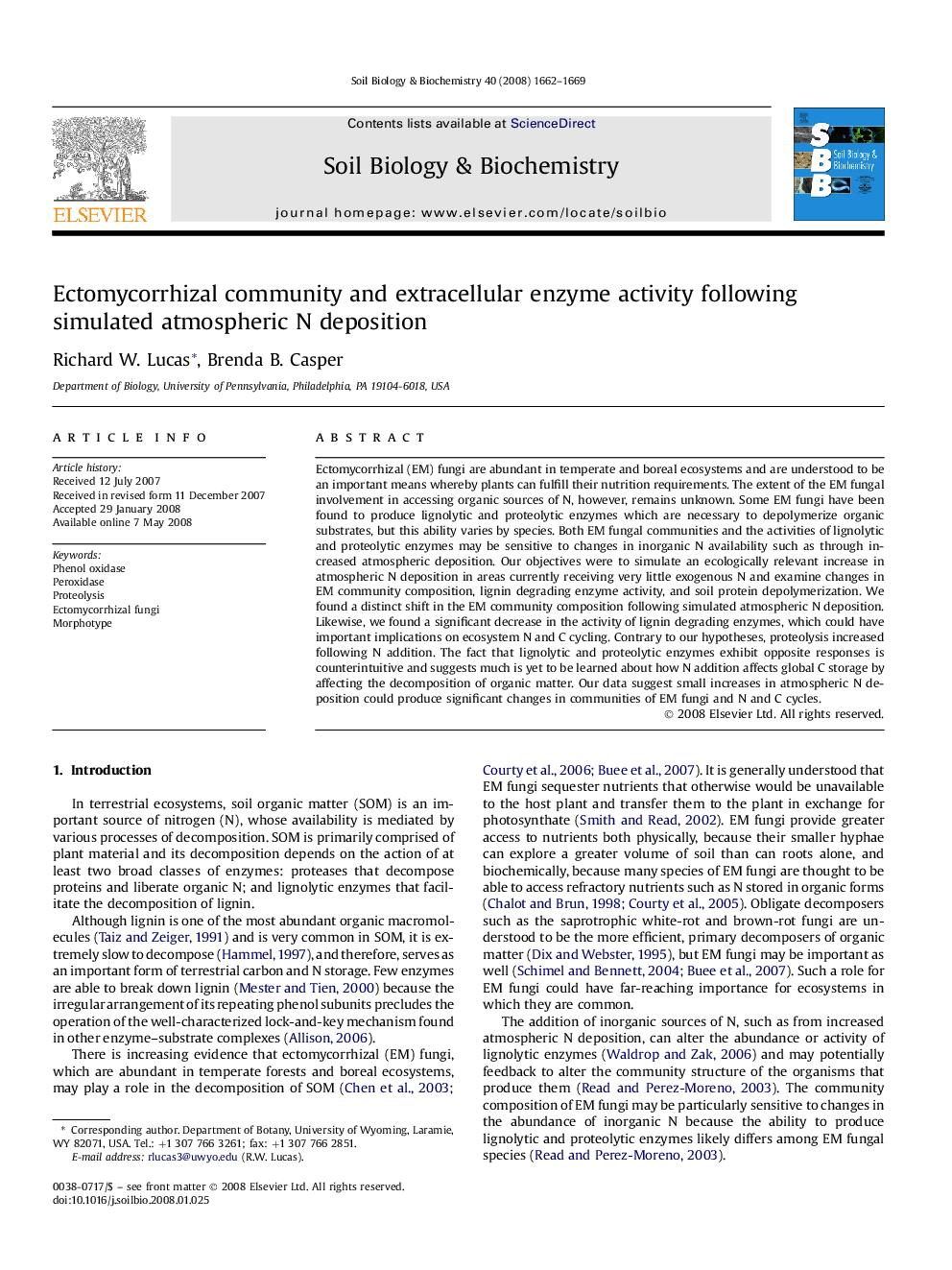| Article ID | Journal | Published Year | Pages | File Type |
|---|---|---|---|---|
| 2025818 | Soil Biology and Biochemistry | 2008 | 8 Pages |
Ectomycorrhizal (EM) fungi are abundant in temperate and boreal ecosystems and are understood to be an important means whereby plants can fulfill their nutrition requirements. The extent of the EM fungal involvement in accessing organic sources of N, however, remains unknown. Some EM fungi have been found to produce lignolytic and proteolytic enzymes which are necessary to depolymerize organic substrates, but this ability varies by species. Both EM fungal communities and the activities of lignolytic and proteolytic enzymes may be sensitive to changes in inorganic N availability such as through increased atmospheric deposition. Our objectives were to simulate an ecologically relevant increase in atmospheric N deposition in areas currently receiving very little exogenous N and examine changes in EM community composition, lignin degrading enzyme activity, and soil protein depolymerization. We found a distinct shift in the EM community composition following simulated atmospheric N deposition. Likewise, we found a significant decrease in the activity of lignin degrading enzymes, which could have important implications on ecosystem N and C cycling. Contrary to our hypotheses, proteolysis increased following N addition. The fact that lignolytic and proteolytic enzymes exhibit opposite responses is counterintuitive and suggests much is yet to be learned about how N addition affects global C storage by affecting the decomposition of organic matter. Our data suggest small increases in atmospheric N deposition could produce significant changes in communities of EM fungi and N and C cycles.
